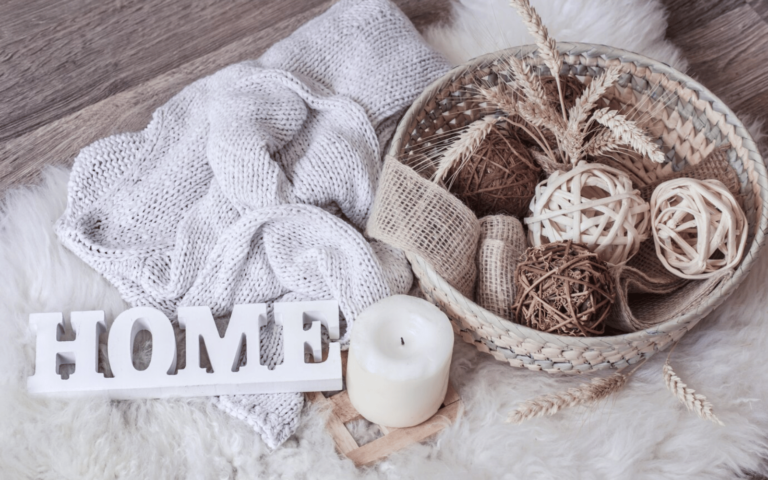Crafting Balance and Harmony – The Art of Interior Design
Crafting Balance and harmony are fundamental in interior design, shaping the essence of any living space. Balance refers to the distribution of visual weight in a room, creating a sense of equilibrium and stability. This can be achieved through symmetry, color, texture, and furniture placement. Harmony, on the other hand, is the art of combining different design elements to create a cohesive and aesthetically pleasing environment. It involves a thoughtful selection and arrangement of colors, textures, and objects that complement each other. Understanding these concepts is for creating spaces that are not just visually appealing but also functionally comfortable. While balance provides structure and organization, harmony brings a sense of unity and fluidity. Together, they create an environment that feels thoughtfully curated and welcoming. Achieving this delicate equilibrium requires a keen eye for detail and an understanding of the principles of design.
The relationship between Crafting Balance and Harmony is symbiotic. Balance can be seen as the framework upon which harmony is built. For instance, a symmetrically balanced room with evenly spaced furniture provides a harmonious backdrop for a variety of textures and colors. Conversely, a room rich in harmonious elements can appear balanced even if its layout is asymmetrical. Crafting Balance and Harmony is not just about following rules; it’s about creating a space that resonates with the inhabitants. It’s a reflection of one’s personal style and way of life. Therefore, while understanding the technical aspects of these concepts, it’s equally important to infuse personal touches that make a space truly unique and comforting.
The Role of Color in Crafting Balance and Harmony
Color plays a pivotal role in setting the mood and tone of a space. The right color palette can create a sense of harmony and cohesion. When choosing colors for a room, it’s important to consider their psychological effects. For example, blues and greens are often associated with calmness and relaxation, making them great choices for bedrooms or bathrooms, while warmer colors like reds and oranges can evoke energy and enthusiasm, suitable for living rooms or kitchens. The key to creating harmony with color lies in balance. A harmonious color scheme often involves a balance between warm and cool tones. For a more dynamic space, contrasting colors can be usedr, neutral colors often serve as a foundation, providing a backdrop against which bolder colors can stand out.
Incorporating a mix of light and dark shades can also enhance the sense of balance. Light colors tend to open up a space, making it feel airier and more expansive, while darker hues can add depth and sophistication. The Tactic is in finding the right proportion of light to dark to avoid making a room feel either too cramped or too stark. Finally, consistency in color usage throughout a home can significantly contribute to a sense of harmony. This doesn’t mean every room should have the same color scheme, but rather that there should be a cohesive flow of colors from one room to another. This continuity helps create a sense of unity throughout the home.
The Symmetry and Asymmetry in Crafting Balance and Harmony
Symmetry is often the first thing that comes to mind when thinking about balance in design. It involves mirroring elements on either side of a central line, creating a sense of order and stability. Symmetrical designs are pleasing to the eye and easy to understand, making them a popular choice in traditional interior design. However, symmetry doesn’t always have to be rigid; it can be soft and flexible, adapting to the functional needs of the space. Asymmetry, on the other hand, offers a more dynamic approach to balance. It involves an uneven distribution of elements but still achieves balance through the strategic placement of objects. Asymmetrical designs can be more complex and intriguing, as they often require a more thoughtful arrangement to achieve a sense of equilibrium.
The key to successful asymmetrical design lies in understanding the visual weight of objects. For instance, a large piece of furniture on one side of the room can be balanced by a cluster of smaller pieces on the other. Asymmetry allows for more creativity and personal expression in design, often resulting in a more casual and relaxed atmosphere. Both symmetry and asymmetry have their places in interior design. The choice between the two should be guided by the intended mood and style of the space. While symmetrical designs convey formality and order, asymmetrical arrangements are more suited to creating a lively and organic feel.
Textures and Patterns Crafting Balance and Harmony
Textures and patterns add depth and interest to a room, and when used thoughtfully, they can significantly contribute to a harmonious design. Textures refer to the feel or appearance of a surface – smooth, rough, soft, hard – and can be incorporated through fabrics, furnishings, and finishes. Patterns, on the other hand, are repetitive designs that can be geometric, floral, abstract, or anything in between. Mixing textures and patterns is an art that requires a delicate balance. The key is to create contrast without causing visual chaos. For instance, pairing smooth, glossy surfaces with rough, matte textures can create an appealing balance. Similarly, combining large-scale patterns with smaller, more intricate designs can enhance visual interest without overwhelming the space.
The rule of thumb when mixing patterns is to stick to a consistent color palette. This helps in tying different patterns together, creating a cohesive look. Also, varying the scale of patterns can prevent them from competing with each other for attention. For example, a large striped sofa can be complemented with small geometric throw pillows. Lighting plays a role in how textures and patterns are perceived. Natural light can highlight the intricacies of a texture or the depth of a pattern, while artificial lighting can be used to create mood and ambiance. Positioned lighting can bring out Finest in your texture and pattern choices, enhancing the overall harmony of the room.
Crafting Balance and Harmony Lighting
Lighting is a tool in interior design, capable of transforming the mood and atmosphere of a space. It’s not just about the intensity or the color of the light but also about its placement and how it interacts with other elements in the room. A well-lit room feels warm and inviting, while poor lighting can make even maximum beautifully designed space feel uninviting. There are three main sorts of lighting to consider: ambient, task, and accent. Ambient lighting provides the overall illumination of a space and is typically achieved through ceiling lights. Task lighting is more focused, designed to illuminate specific areas for activities like reading or cooking. Accent lighting is used to highlight architectural features or artwork.
Balancing these sorts of lighting is key to creating a harmonious atmosphere. For instance, a room that relies solely on overhead lighting can feel flat and uninviting. By adding table lamps (task lighting) and wall sconces (accent lighting), the space becomes more dynamic and engaging. The color temperature of lighting also plays a significant role in the ambiance of a room. Warmer lights create a cozy and relaxing atmosphere, ideal for living rooms and bedrooms. Cooler lights, on the other hand, are energizing and better suited for kitchens and bathrooms. Finally, natural light should be maximized wherever possible. It not only enhances the true colors of your design elements but also brings a sense of connection to the outside world. Balancing natural and artificial light can be challenging but is essential for creating a space that feels harmonious throughout the day.
Crafting Balance and Harmony Furniture Placement
The arrangement of furniture is critical in achieving a balanced and functional space. It’s not just about filling a room with furniture but about considering how each piece interacts with the others and how they collectively contribute to the overall flow of the space. A well-arranged room feels inviting and easy to move through, while a poorly planned layout can disrupt the harmony of the design. The first step in furniture placement is to identify the focal point of the room. This could be a fireplace, a large window, or a piece of artwork. Furniture should be arranged in a way that complements this focal point, creating a sense of balance and order. In a living room, for example, sofas and chairs can be arranged to face the focal point, encouraging social interaction and a cohesive look.
It’s also important to consider the scale and proportion of furniture in relation to the room size. Large, bulky furniture can overwhelm a small space, while petite furniture can look lost in a large room. The goal is to find a balance that makes the room feel neither too cramped nor too sparse. Circulation is another key aspect of furniture placement. There should be enough space for people to move comfortably around the room without having to navigate through a maze of furniture. This not only improves the functionality of the space but also contributes to a sense of balance and ease. Finally, furniture arrangement should reflect the intended use of the space. A family room might require a more casual and flexible layout, while a formal living room might benefit from a more structured arrangement. Ultimately, the layout should support the lifestyle and needs of the inhabitants.
Crafting Balance and Harmony – Decor and Accessories
Decor and accessories are the finishing touches that can make or break the harmony of a room. They are the elements that add personality and character, transforming a space from a mere arrangement of furniture into a reflection of the inhabitants’ style and taste. The key to using decor and accessories harmoniously is to find a balance between functionality and aesthetics. When selecting decor, it’s important to consider the overall theme and color scheme of the room. Decorative items should complement these elements, not clash with them. This doesn’t mean everything has to match perfectly, but there should be a sense of cohesion. Mixing different styles and eras can be effective, but it requires a good eye to ensure that the room still feels harmonious.
In terms of quantity, less is often more. A room cluttered with too many decorative items can feel chaotic and overwhelming. Each piece should have a purpose, whether it’s to add color, texture, or simply to bring joy. The arrangement of these items is also important. Grouping similar items together can create a sense of order and intentionality. Accessories like throw pillows, rugs, and curtains not only add color and texture but also contribute to the comfort and functionality of a space. They can be used to soften hard lines, add warmth, and tie together different elements in the room. Finally, personal items like photographs, artwork, and souvenirs can add a unique touch to a space. These items tell a story and create a sense of connection, making a house truly feel like a home. However, it’s important to display them thoughtfully to maintain the overall harmony of the space.
The Impact of Space and Proportion in Crafting Balance and Harmony
The principles of space and proportion are fundamental in creating a balanced and harmonious interior. Proportion refers to the relationship between the size of different elements in a room, while space pertains to how these elements are arranged within the room. Getting these aspects right is for creating a space that is both aesthetically pleasing and comfortable to live in. Proportion is about scale – ensuring that furniture and decor are appropriately sized for the room and each other. A large room with high ceilings, for instance, can handle bigger, taller furniture, while a smaller room might benefit from more petite pieces. Proportion also applies to patterns and textures; large patterns can overwhelm a small space, while small patterns might be lost in a large one.
Space, or the use of negative space, is equally important. A room shouldn’t be overcrowded with furniture and decor; there should be enough empty space to allow the room to breathe. This doesn’t mean that large portions of a room should be left empty, but rather that the space should be used thoughtfully, with a focus on functionality and flow. In terms of layout, proportion and space come into play in determining the arrangement of furniture and the distance between pieces. There should be a harmonious relationship between the size of the furniture and the amount of space around it. This creates a sense of balance and makes the room more comfortable to use. Finally, the proportion of light and color in a room can significantly impact its feel. A well-proportioned mix of light and dark colors can create depth and interest, while a balance of natural and artificial light can change the mood of the space throughout the day.
Cultural Influences on Crafting Balance and Harmony
Interior design is influenced by a myriad of cultural styles, each bringing its own set of principles and aesthetics to the table. Understanding and incorporating these cultural elements can enrich the design of a space, creating a unique and harmonious blend of global influences. Different cultures have distinct approaches to Crafting Balance and Harmony. For example, Scandinavian design emphasizes minimalism and functionality, with a focus on simple, clean lines and natural materials. Japanese design, on the other hand, values the concept of Ma – the balance between space and objects, creating rooms that feel serene and uncluttered.
Incorporating cultural elements into a design can be done in various ways. It could be through the use of traditional patterns and textiles, color schemes inspired by a particular region, or furniture and decor that reflect a certain cultural style. The key is to do so respectfully and thoughtfully, ensuring that these elements are integrated in a way that feels natural and harmonious. Case studies of culturally influenced designs can provide valuable inspiration. For instance, a living room that seamlessly blends Moroccan-inspired textiles and patterns with modern furniture creates a space that is both exotic and contemporary. Similarly, a bedroom that incorporates Japanese minimalism can feel like a tranquil retreat. Cultural influences in design are not just about aesthetics; they also offer a way to connect with different traditions and histories. By bringing these elements into our homes, we create spaces that are not only beautiful and harmonious but also rich in meaning and story.
Crafting Balance and Harmony Sustainable Design
Sustainable design is increasingly becoming a cornerstone in modern interior design, emphasizing harmony not just within the space but with the environment as well. This approach focuses on minimizing the environmental impact of design through the use of eco-friendly materials and practices. The principles of sustainable design include the use of renewable resources, energy efficiency, and reducing waste. This could involve choosing furniture made from sustainably sourced wood, using energy-efficient lighting, and selecting textiles made from natural fibers.
Materials play a significant role in sustainable design. Reclaimed wood, bamboo, and recycled metals are popular choices, offering both aesthetic appeal and environmental benefits. These materials often come with a unique history and character, adding depth and interest to the design. Sustainable design also extends to the way a space interacts with its natural surroundings. This could mean maximizing natural light to reduce the need for artificial lighting, using plants to improve air quality, or designing in a way that complements the local climate and landscape.
Examples of sustainable interior designs can be found in homes that use solar panels for energy, rainwater harvesting systems, and green roofs. These features not only reduce the environmental footprint of the home but also create a space that is in harmony with nature. Sustainable design is not just a trend; it’s a mindset that encourages us to think about the long-term implications of our design choices. By adopting sustainable practices, we can create spaces that are not only beautiful and harmonious but also responsible and forward-thinking. This approach aligns with the growing global consciousness about environmental preservation and sustainability.
Technology and Modern Design Techniques for Crafting Balance and Harmony
The role of technology in interior design has grown exponentially, offering new ways to achieve Crafting Balance and Harmony in a space. Modern design techniques leverage technology to create more efficient, personalized, and innovative designs. From virtual reality (VR) to computer-aided design (CAD) software, these tools are revolutionizing the way designers approach interior spaces. Virtual reality, for instance, allows designers and clients to experience a space before it’s even built. This immersive technology helps in visualizing different design elements in real-time, ensuring that the final product is harmonious and aligned with the client’s vision. CAD software, on the other hand, offers precision and flexibility in designing, allowing for the analysis of different layouts and schemes with ease.
Finally, the art of crafting balance and harmony in interior design is a complex and nuanced endeavor. It requires a thoughtful consideration of various elements – from color and lighting to furniture and decor. By understanding and applying the principles of Crafting Balance and Harmony, designers can create spaces that are not only aesthetically pleasing but also functional and reflective of the inhabitants’ personalities. This article has analyzed the various facets of Crafting Balance and Harmony in interior design, emphasizing the importance of each element in creating a cohesive whole. Whether it’s through the use of color, the arrangement of furniture, the integration of cultural influences, or the adoption of sustainable practices, each aspect plays a role in the overall design. Ultimately, the goal of interior design is to create spaces that are not just visually appealing but also comfortable, welcoming, and representative of those who inhabit them. By continually learning, experimenting, and adapting, designers can craft spaces that truly embody the essence of Crafting Balance and Harmony.
Crafting Balance and Harmony: The Influence of Natural Elements
In the sophisticated world of interior design, the inclusion of natural elements is a subtle yet powerful method to create environments that are both soothing and visually appealing. This approach harnesses the intrinsic beauty and diversity of the natural world to enhance indoor spaces, bridging the gap between the outdoors and the indoors in a seamless and harmonious manner. Natural elements, such as wood, stone, water features, and plant life, play a critical role in designing spaces that are not only beautiful but also conducive to wellbeing and comfort.
Wood, with its warm tones and unique textures, brings a sense of comfort and earthiness to any room. Whether it is in the form of hardwood floors, carved furniture, or structural beams, wood lends a touch of nature’s own artistry to the interior landscape. Its versatility allows it to adapt to a variety of design styles, from rustic to contemporary, making it a favorite among interior designers aiming to create a balanced and harmonious environment.
Stone is another material that can significantly affect the ambiance of a space. Its cool, crisp texture and natural color variations can introduce an element of the outdoors into our homes. Used in features such as wall facings, countertops, or decorative accents, stone offers durability and a timeless appeal that complements the wooden elements often used in tandem. Moreover, incorporating stone into a space can have a grounding effect, enhancing the room’s ability to foster calm and stability.
The sound of water has long been celebrated for its soothing qualities. Integrating water features such as fountains, water walls, or small indoor ponds can transform an interior space into a tranquil sanctuary, ideal for relaxation and reflection. The auditory and visual presence of water adds a dynamic yet peaceful element to interiors, helping to maintain a sense of balance and serenity.
Incorporating plant life is perhaps one of the most effective ways to bring balance and harmony into a home. Plants not only improve air quality but also add vibrancy and life to their surroundings. The green hues of foliage and the varied textures of different plant species provide a visual feast that can elevate the aesthetic of any room. Strategic placement of plants, whether in clusters to create a mini indoor garden or as solitary pieces in quieter corners, can enhance the overall sense of wellbeing in the home.
Beyond the aesthetic and emotional benefits, integrating natural elements into interior design also has practical advantages. Materials like wood and stone are sustainable and can contribute to the energy efficiency of a building. They often require less maintenance and can endure the wear and tear of everyday life, making them a practical choice for both residential and commercial spaces.
The thoughtful inclusion of natural elements in interior design is a testament to the enduring appeal of nature’s palette. By bringing elements of the natural world into our indoor environments, we not only enhance the visual appeal of our spaces but also improve the quality of our living environments. This harmonious blend of nature and design not only elevates the aesthetics of a space but also supports a lifestyle that values comfort, tranquility, and a connection to the natural world. Through this approach, designers and homeowners alike can craft spaces that truly embody balance and harmony.
See More At: woolen8wonders.com







